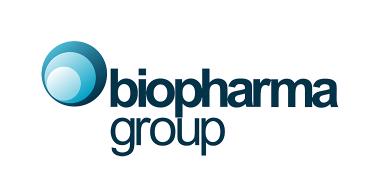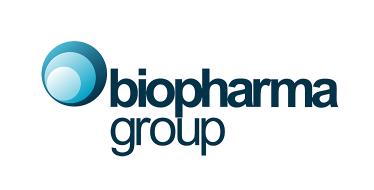 Add My Company
Add My Company

Samples are at the heart of every lab. They are often valuable, precious and contain information that could answer novel research questions. This could lead to new drug discoveries, provide people with life-saving treatments, or, in the case of infertility clinics, helping to create lives. Therefore, in fertility clinics, academia, biobanks, research and pharmaceutical laboratories, safe handling and storage of biological samples is paramount to achieve successful results.
Biosamples that need to be cryogenically stored are particularly susceptible to mismanagement since they must be stored within a strict temperature range. Any fluctuations in temperature during sample storage, or during accidents in retrieval, can lead to deterioration or even complete sample loss.
Despite the detrimental consequences of biospecimen mishandling, accidents can happen and handling at some repositories can be less than ideal when the importance of adherence to temperature protocols is not fully understood. Here, we explore how centralised cryostorage facilities in conjunction with developments in digitalisation and automation, are helping laboratories become safer and more efficient in sample management.
The dangers of outdated cryostorage facilities
In many laboratories and institutes, cryostorage vessels are scattered across multiple locations, and sites. This makes it difficult to monitor, maintain, find, and access samples as well as to practice standardised procedures across the entirety of the cryostorage fleet.
 Some establishments may mitigate this by consolidating many small cryostorage vessels into a single space. However, each vessel still requires its own monitoring equipment and separate re-filling of liquid nitrogen will need to be carried out regularly. Moreover, the presence of too many cryostorage vessels in a confined space can create an unsafe environment by introducing unnecessary trip hazards and increasing the asphyxiation risk from liquid nitrogen evaporation.
Some establishments may mitigate this by consolidating many small cryostorage vessels into a single space. However, each vessel still requires its own monitoring equipment and separate re-filling of liquid nitrogen will need to be carried out regularly. Moreover, the presence of too many cryostorage vessels in a confined space can create an unsafe environment by introducing unnecessary trip hazards and increasing the asphyxiation risk from liquid nitrogen evaporation.
Access is another significant concern for many laboratories where samples in cryostorage vessels have no security or are protected via a simple padlock. Open access to inventory increases the chances of missing or mixed up samples, potentially leading to sample deterioration, data loss and contamination. At best, businesses may incur a cost to replace lost, mixed up or compromised samples. At worst, samples may be irreplaceable, or non-compliance issues can result in hefty fines or even prison sentences.
Aside from the storage vessels themselves, sample management is too often entrusted to spreadsheets, legacy databases or paper-based systems creating ample opportunity for mismanagement. These options can make finding samples and their associated information time-consuming, lead to uncertainty as to what samples are in storage, and often contain little to no audit trail.
In an ideal world, laboratories would consolidate all the necessary infrastructure, processes, and expertise to configure a single, centralised cryostorage facility that helps support the easy and safe retrieval of samples while making it simple to follow any compliance and regulation processes.
The answer? Safe, centralised cryostorage
Many areas of research and biobanking require cryostorage of thousands, or even millions, of samples. Thus, high-capacity freezers are a pre-requisite to successfully centralising cryostorage facilities. By consolidating samples into larger vessels, trip hazards, asphyxiation risk and required floorspace will be minimized. Indeed, some high-capacity storage vessels can hold the same volume of samples as four typical smaller capacity vessels. This also simplifies refilling and reduces running costs as only a single vessel needs to be maintained with liquid nitrogen.
Cryostorage facilities must be aligned with adequate health and safety measures; including staff training, ventilation, and an environment monitoring system coupled with alarms. Employing health and safety measures is far easier at a single centralised cryostorage facility than at multiple locations. Additionally, some modern cryostorage vessels can be connected to the network to enable remote environmental monitoring with an email or text alarm system.
Safeguarding samples with digitised and automated storage
When transitioning from smaller cryostorage vessels to a centralised cryostorage infrastructure, users may be concerned about indiscriminate access to a singular high-capacity vessel. Additionally, if more samples are stored in a singular vessel, it may be accessed by more users and more often, compromising the storage temperature, however, there is a solution to overcome these concerns.
Customisable digital access and permissions to designated samples coupled with semi-automated solutions, enables ‘hands-free’ retrieval of samples from storage. This technology allows users to simply log on to a digital platform with a password, key card, or biometrics, select their samples, and a robotics-based system fetches the corresponding vials. The digital platform logs a record of the event creating a complete user audit trail to meet compliance guidelines and regulatory obligations.
 This type of sample management software and automated picking saves time searching for samples, avoids sample mix-ups and improves storage efficiency by giving a clear view of what samples are present. Moreover, the automated generation of an audit trail can reduce the time needed to prepare for an inspection while making it easier for laboratories to ensure that the correct governance, regulatory and safety considerations are employed.
This type of sample management software and automated picking saves time searching for samples, avoids sample mix-ups and improves storage efficiency by giving a clear view of what samples are present. Moreover, the automated generation of an audit trail can reduce the time needed to prepare for an inspection while making it easier for laboratories to ensure that the correct governance, regulatory and safety considerations are employed.
Embracing centralised cryostorage
Fertility clinics, academia, biobanks, research and pharmaceutical labs regularly cryopreserve and manage hundreds of thousands of samples. It can quickly become disorganised, unsafe, and non-compliant when many small cryostorage vessels, spread across multiple locations are used; especially when coupled with a spreadsheet or paper-based management system.
Emerging technologies are enabling digitalization and automation of sample monitoring, management, and storage. These systems have the potential to create a safer working environment while simultaneously preventing sample mix-ups, deterioration, and loss. Ultimately, this will help an organisation save time and money, simplify adherence to regulations and make the most of their samples.
Contact us to discover how Biopharma Group can help you select the correct cryopreservation storage solutions to match your facility needs.
For more information on Centralising cryostorage for better safety and sample management talk to Biopharma Group

